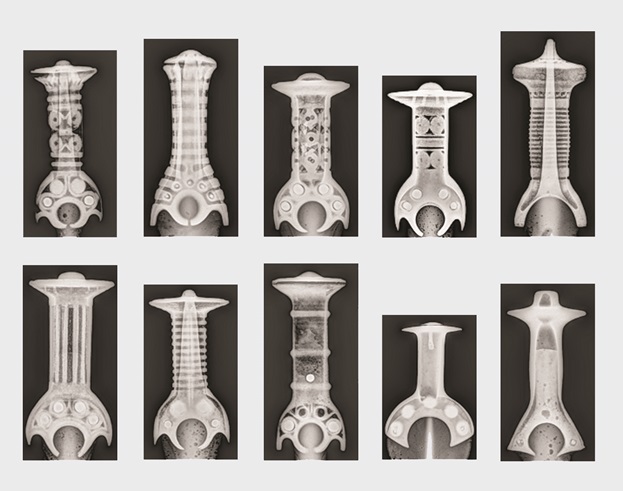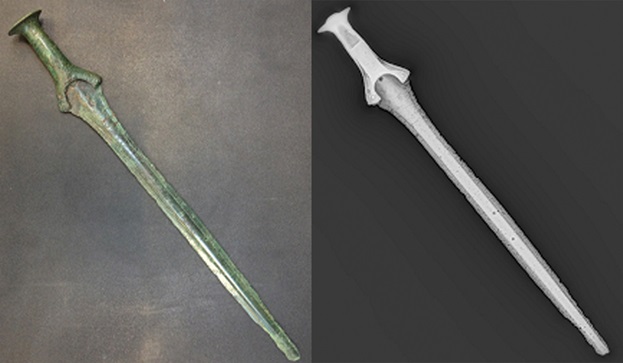Digital X-ray examination of swords from the early Bronze Age
We have examined bronze swords from the National Museum of Denmark by using computed radiography. Not an everyday task.
Signe Nygaard Holm, conservation technician at the department of conservation from the National Museum of Denmark, contacted us regarding digital X-ray examination of their bronze age swords. She came to us because of the high quality pictures our intelligent picture processing delivers and our high productivity.
Sword construction and experience exchange
All in all, we had to examine 143 swords which is around half of the bronze swords in the museums possession. Furthermore, preliminary examinations showed that in order to get the most knowledge from the digital X-ray examinations, all swords had to be exposed from three angels as well as the entire blade. It took eight days to thoroughly examine all the swords.
The purpose of the examination was first and foremost to examine the technical construction of the swords. Especially regarding the construction of the hilt and how it is fasten to the blade. The museum also expected the X-ray examination to cast a light on whether knowledge exchange regarding the techniques used in production of bronze swords had occured between the Nordic and Central European countries.
The preliminary examinations suggested that even in the Bronze Age the people were aware of the importance of experience exchange between different countries and cultures.


Invaluable swords demands strict safety measures
The examination was originally commissioned at the National Museum by Jan-Heinrich Bunnefeld from the Georg-August University of Göttingen in Germany. And was a part of a larger research project on early Bronze Age metal hilt swords from Denmark and Schleswig-Holstein, Germany. All the swords came from the second and third period of the early Bronze Age, i.e. around 1600-1100 BC.
Being invaluable, there were, naturally, quite unusual safety measures when it came to the transportation and handling of the swords. Only the employees of the museum were allowed to handle the swords and the transportation of the swords had to be in one of the museums’ cars. And during transportation they had to be accompanied by at least two employees.

